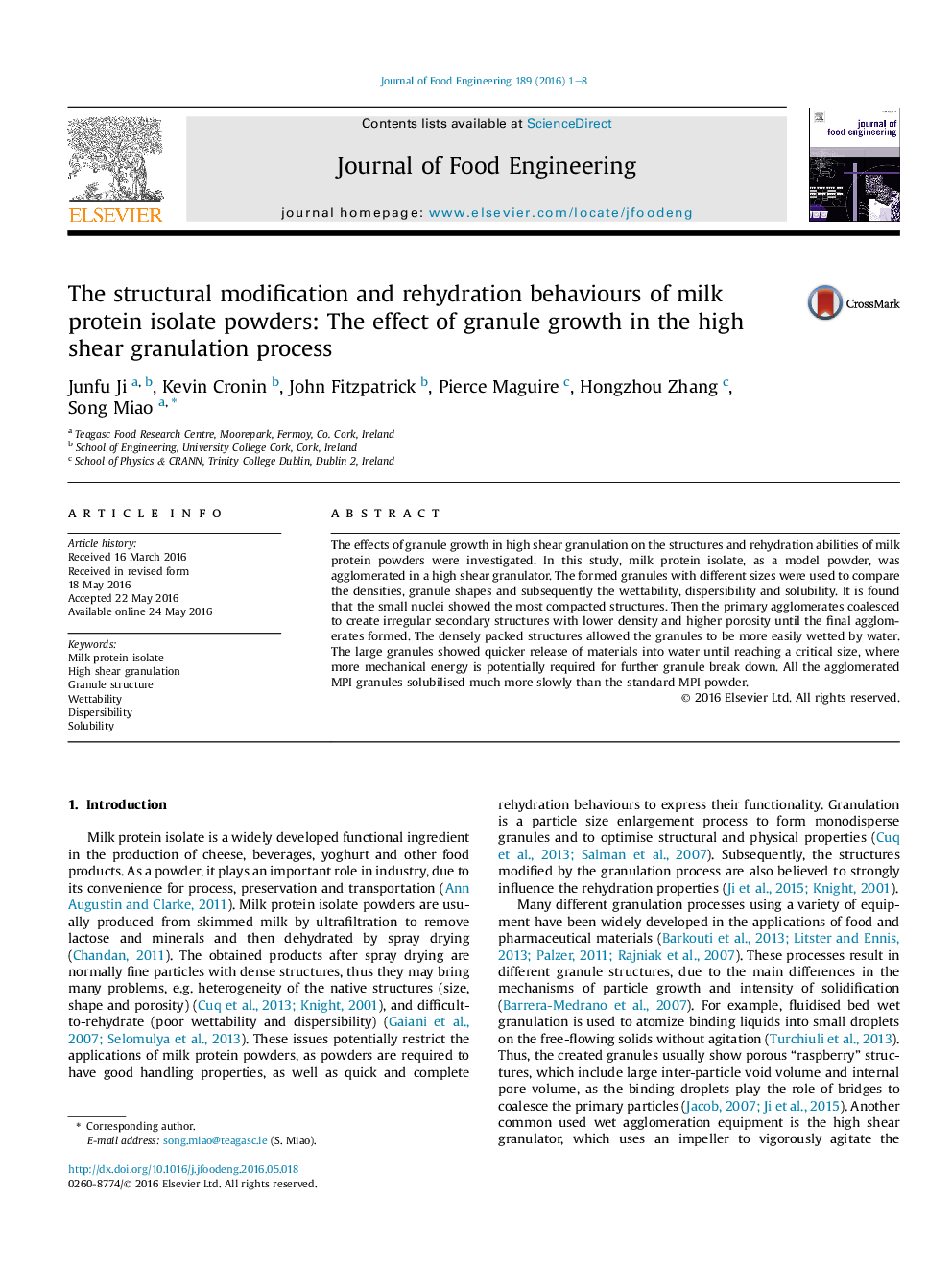| Article ID | Journal | Published Year | Pages | File Type |
|---|---|---|---|---|
| 222582 | Journal of Food Engineering | 2016 | 8 Pages |
•The growth processes created the granules with complex hierarchical structures.•The modified structures made powders that were more easily wetted by water.•It caused poorer dissolution by prolonged water penetration into denser structures.•Large granules showed quicker release of materials until reaching a critical size.
The effects of granule growth in high shear granulation on the structures and rehydration abilities of milk protein powders were investigated. In this study, milk protein isolate, as a model powder, was agglomerated in a high shear granulator. The formed granules with different sizes were used to compare the densities, granule shapes and subsequently the wettability, dispersibility and solubility. It is found that the small nuclei showed the most compacted structures. Then the primary agglomerates coalesced to create irregular secondary structures with lower density and higher porosity until the final agglomerates formed. The densely packed structures allowed the granules to be more easily wetted by water. The large granules showed quicker release of materials into water until reaching a critical size, where more mechanical energy is potentially required for further granule break down. All the agglomerated MPI granules solubilised much more slowly than the standard MPI powder.
